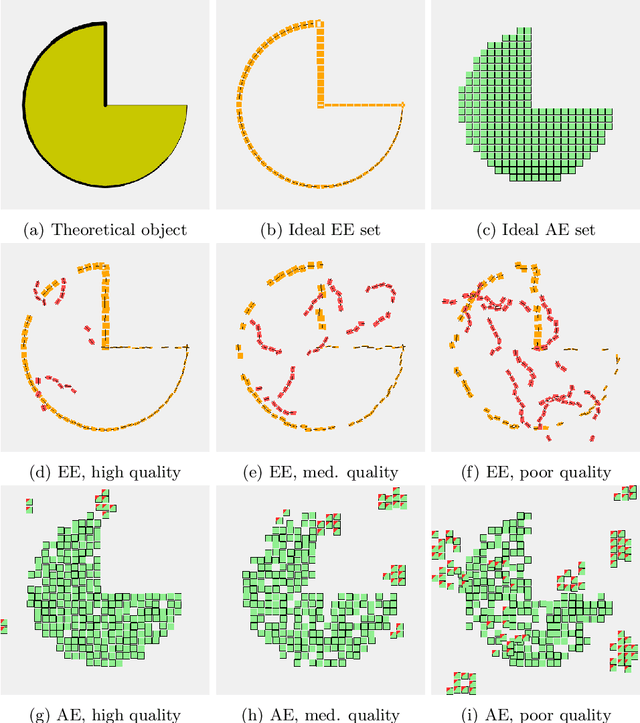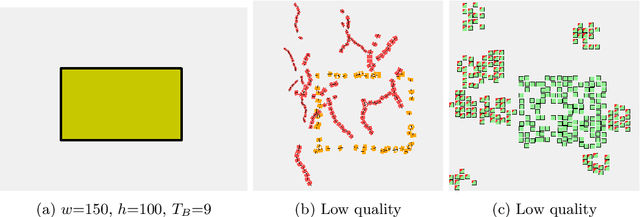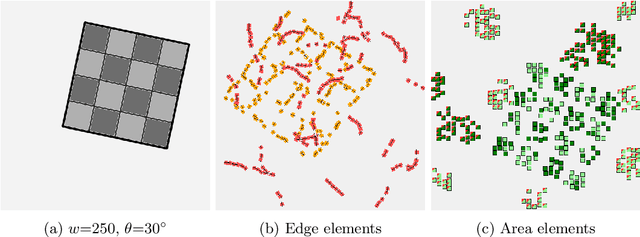ORCEA: Object Recognition by Continuous Evidence Assimilation
Paper and Code
May 11, 2021



ORCEA is a novel object recognition method applicable for objects describable by a generative model. The primary goal of ORCEA is to maintain a probability density distribution of possible matches over the object parameter space, while continuously updating it with incoming evidence; detection and regression are by-products of this process. ORCEA can project primitive evidence of various types (edge element, area patches etc.) directly on the object parameter space; this made possible by the study phase where ORCEA builds a probabilistic model, for each evidence type, that links evidence and the object-parameters under which they were created. The detection phase consists of building the joint distribution of possible matches resulting from the set of given evidence, including possible grouping to signal/noise; no additional algorithmic steps are needed, as the resulting PDF encapsulates all knowledge about possible solutions. ORCEA represents the match distribution over the parameter space as a set of Gaussian distributions, each representing a concrete probabilistic hypothesis about the object, which can be used outside its scope as well. ORCEA was tested on synthetic images with varying levels of complexity and noise, and shows satisfactory results.
 Add to Chrome
Add to Chrome Add to Firefox
Add to Firefox Add to Edge
Add to Edge